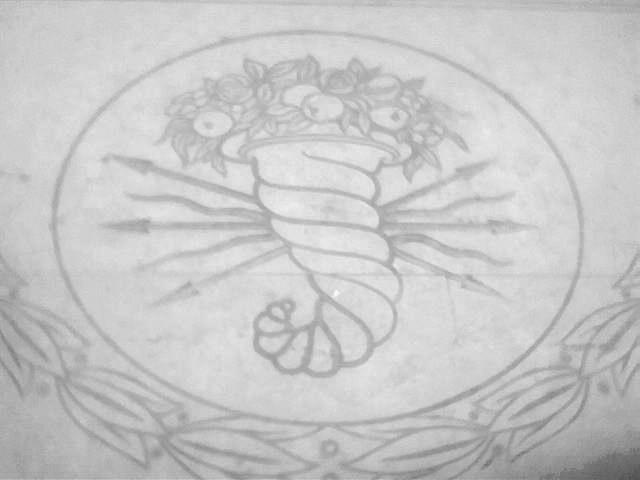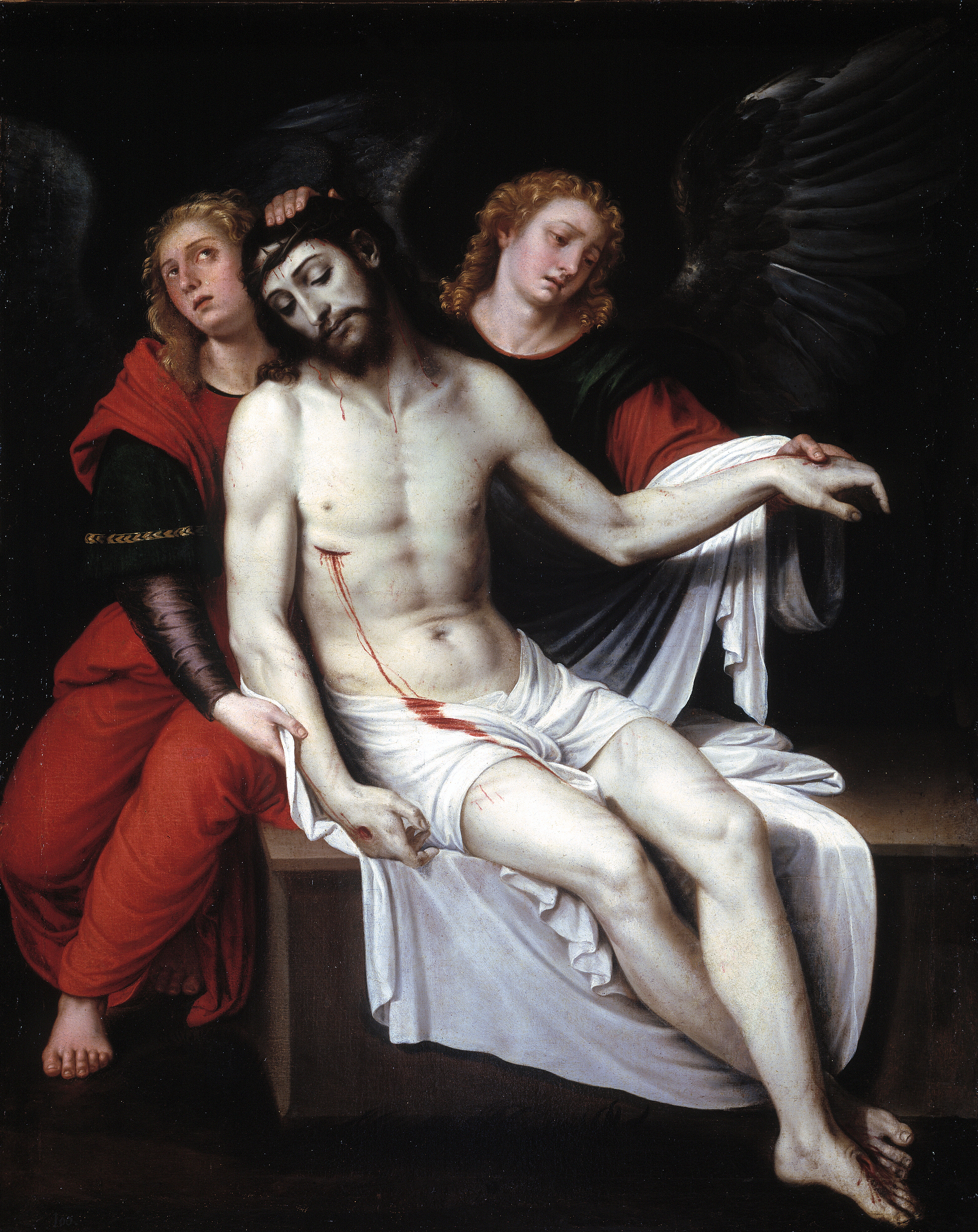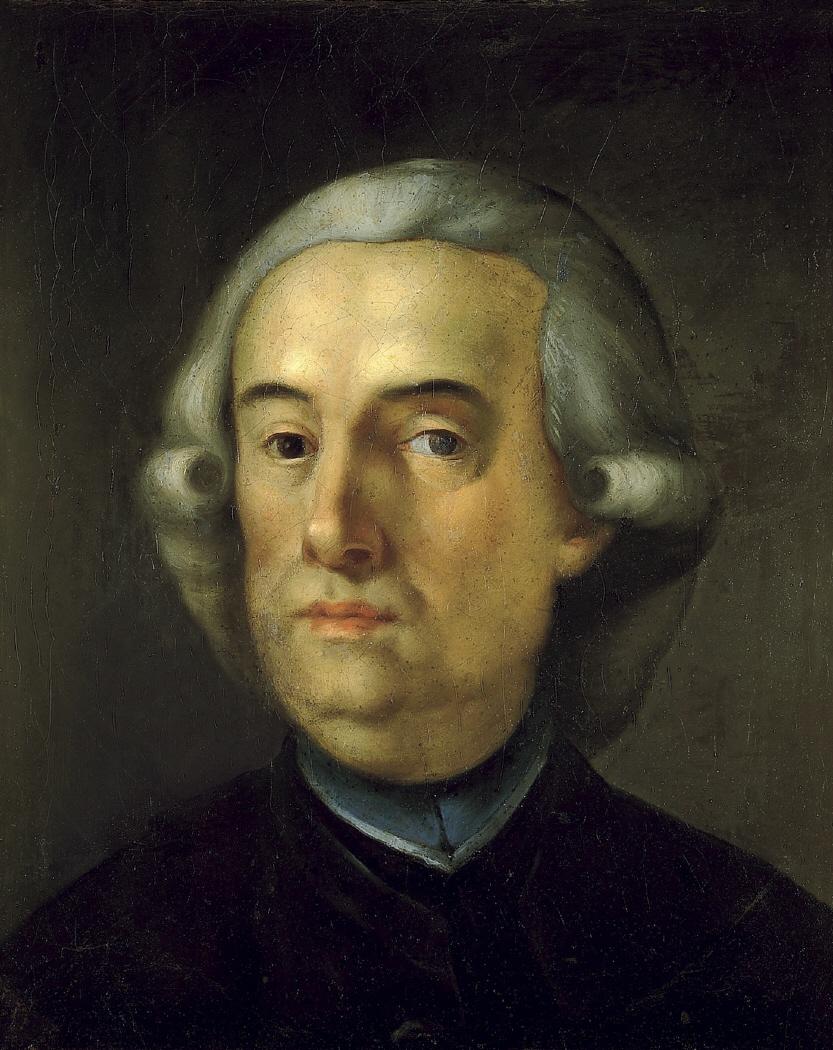|
Antonio Bisquert
Antonio Bisquert (1596 – 1646) was a Spanish painter of the Baroque period. He was born in Valencia, where he became a pupil of Francisco Ribalta. He established himself at Teruel in 1620 where he got married. In his works, religious and subject always to a clientele that, in his case, it seems exclusively ecclesiastical and intended for the decoration of religious buildings, such as the great pictorial cycles of the life of San Lorenzo for your church or Huesca of the ''Life of St. Vincent'' for San Gil in Zaragoza, formerly attributed to Jusepe Martínez, can stand a manifest good taste for the representation of everyday objects and supporting details. Antonio Ponz, on a visit to the Teruel Cathedral, praised his altarpiece of the Eleven Thousand Virgins signed "1628: Pinxit: Antonius Bisquert" and holding him by "Professor of much merit". The art historian Juan Agustín Ceán Bermúdez Juan Agustín Ceán Bermúdez (17 September 1749 in Gijón3 December 1829 in Madr ... [...More Info...] [...Related Items...] OR: [Wikipedia] [Google] [Baidu] |
Baroque
The Baroque (, ; ) is a style of architecture, music, dance, painting, sculpture, poetry, and other arts that flourished in Europe from the early 17th century until the 1750s. In the territories of the Spanish and Portuguese empires including the Iberian Peninsula it continued, together with new styles, until the first decade of the 19th century. It followed Renaissance art and Mannerism and preceded the Rococo (in the past often referred to as "late Baroque") and Neoclassical styles. It was encouraged by the Catholic Church as a means to counter the simplicity and austerity of Protestant architecture, art, and music, though Lutheran Baroque art developed in parts of Europe as well. The Baroque style used contrast, movement, exuberant detail, deep colour, grandeur, and surprise to achieve a sense of awe. The style began at the start of the 17th century in Rome, then spread rapidly to France, northern Italy, Spain, and Portugal, then to Austria, southern Germany, and Rus ... [...More Info...] [...Related Items...] OR: [Wikipedia] [Google] [Baidu] |
Valencia, Spain
Valencia ( va, València) is the capital of the autonomous community of Valencia and the third-most populated municipality in Spain, with 791,413 inhabitants. It is also the capital of the province of the same name. The wider urban area also comprising the neighbouring municipalities has a population of around 1.6 million, constituting one of the major urban areas on the European side of the Mediterranean Sea. It is located on the banks of the Turia, on the east coast of the Iberian Peninsula, at the Gulf of Valencia, north of the Albufera lagoon. Valencia was founded as a Roman colony in 138 BC. Islamic rule and acculturation ensued in the 8th century, together with the introduction of new irrigation systems and crops. Aragonese Christian conquest took place in 1238, and so the city became the capital of the Kingdom of Valencia. The city's population thrived in the 15th century, owing to trade with the rest of the Iberian Peninsula, Italian ports and other locat ... [...More Info...] [...Related Items...] OR: [Wikipedia] [Google] [Baidu] |
Francisco Ribalta
Francesc Ribalta (2 June 1565 – 12 January 1628), also known as ''Francisco Ribaltá'' or ''de Ribalta'', was a Spanish painter of the Baroque period, mostly of religious subjects. Biography He was born in Solsona, Lleida. Although his first apprenticeship was apparently with Navarrete, who worked for years in the Escorial, Ribalta's earliest work (a ''Cruxifixion'' of 1582) was signed in Madrid. After his years in Madrid, Ribalta was to settle as an artist in Valencia. He became among the first followers in Spain of the austere tenebrist style of Caravaggio. It is unclear if he directly visited either Rome or Naples, where Caravaggio's style had many adherents. Alternatively, it is likely that tenebrist paintings were available in Spain by the early 17th century through the Spanish rule of the Neapolitan kingdom. Jusepe de Ribera is said to have been one of his pupils, although it is entirely possible that Ribera acquired his tenebrism when he moved to Italy. Style T ... [...More Info...] [...Related Items...] OR: [Wikipedia] [Google] [Baidu] |
Teruel
Teruel () is a city in Aragon, located in eastern Spain, and is also the capital of Teruel Province. It has a population of 35,675 in 2014 making it the least populated provincial capital in the country. It is noted for its harsh climate, with a wide daily variation on temperatures and its renowned ''jamón serrano'' (cured ham), its pottery, its surrounding archaeological sites, rock outcrops containing some of the oldest dinosaur remains of the Iberian Peninsula, and its famous events: '' La Vaquilla del Ángel'' during the weekend (Friday to Monday) closest to 10 July and "Bodas de Isabel de Segura" around the third weekend of February. Teruel is regarded as the "town of mudéjar" (Moorish-influenced architecture) due to numerous buildings designed in this style. All of them are comprised in the Mudéjar Architecture of Aragon which is a World Heritage Site by the UNESCO. Teruel's remote and mountainous location above sea level and its low population has led to relative i ... [...More Info...] [...Related Items...] OR: [Wikipedia] [Google] [Baidu] |
Jusepe Martínez
Jusepe Martínez Lurbe (1602 in Zaragoza – 1682) was a Spanish painter. He wrote a treatise A treatise is a formal and systematic written discourse on some subject, generally longer and treating it in greater depth than an essay, and more concerned with investigating or exposing the principles of the subject and its conclusions."Treat ... ''Discursos practicables del noblisimo arte de la pintura'' (c.1675, not published until 1866).Robert Enggass, Jonathan Brown -Italian and Spanish Art, 1600-1750: Sources and Documents 1970 179 "This is the Aragonese painter Jusepe Martinez (Zaragoza 1602-1682). His book, Discursos practicables del noblisimo arte de la pintura, written probably around 1675 but not published until 1866, is a combination of artistic pedagogy and ... References 1602 births 1682 deaths {{Spain-painter-stub ... [...More Info...] [...Related Items...] OR: [Wikipedia] [Google] [Baidu] |
Antonio Ponz
Antonio Ponz Piquer (1725 – 4 December 1792) was a Spanish painter. He was born at Bejís in the province of Castellón. He was a pupil of Antonio Richarte at Valencia, then in 1746 moved to Madrid, where he studied for five years. He then went to Rome for a short time, but soon returned to help in repainting and compilation of the artworks at El Escorial. In 1771 he made a journey through Spain. In 1776 he was appointed secretary of the Royal Academy of San Fernando. He was a member of many of the art academies in the Peninsula. He wrote ''Comentarios de la Pintura'' and several other works. Biography Ponz received a comprehensive education in the humanities, arts and theology at Segorbe, University of Valencia, Gandia and the School of the Three Arts in Madrid. He lived in Italy between 1751 and 1760, where he expanded his knowledge of art. There he met Pedro Francisco Jiménez de Góngora y Luján, Duke of Almodovar, who would become Director of the Spanish Roy ... [...More Info...] [...Related Items...] OR: [Wikipedia] [Google] [Baidu] |
Teruel Cathedral
Teruel Cathedral or Catedral de Santa María de Mediavilla de Teruel is a Roman Catholic church in Teruel, Aragon, Spain. Dedicated to St. Mary, it is a notable example of Mudéjar architecture. Together with other churches in the town and in the province of Zaragoza, it has been listed as a UNESCO World Heritage Site since 1986. History The Cathedral of Teruel has its origins in the church of Santa María de Mediavilla, upon which work started in Romanesque style in 1171 and ended with the erection of the Mudéjar tower in 1257. In the second half of the 13th century, the Morisco alarife Juzaff restructured the old Romanesque work and endowed the building with three Mudéjar naves of masonry and brick. The Romanesque apses were replaced in the same Gothic-Mudéjar style as early as the 14th century, as can be seen in the head of the major chapel. The number of supports was reduced by half, leading to greater luminosity and spaciousness in the pointed arch naves. ... [...More Info...] [...Related Items...] OR: [Wikipedia] [Google] [Baidu] |
Juan Agustín Ceán Bermúdez
Juan Agustín Ceán Bermúdez (17 September 1749 in Gijón3 December 1829 in Madrid) was a Spanish writer on art. Biography Bermúdez was born in Gijón, Asturias. He founded an art academy at Seville Seville (; es, Sevilla, ) is the capital and largest city of the Spanish autonomous community of Andalusia and the province of Seville. It is situated on the lower reaches of the River Guadalquivir, in the southwest of the Iberian Peninsul ..., and was given responsibility to order the Archivo General de Indias or the repository of documents relating to the Colonies. He later made secretary of the Council for Indian Affairs in Madrid, a post later lost. He put himself in the service of the statesman and author Jovellanos and wrote his master's biography; Jovellanos then helped pay for his artistic studies and placed him in a government position. He is best known as the author of the ''Diccionario Historico'', a biographical dictionary of the principal artists of Spain. He ... [...More Info...] [...Related Items...] OR: [Wikipedia] [Google] [Baidu] |
Artists From Valencia
An artist is a person engaged in an activity related to creating art, practicing the arts, or demonstrating an art. The common usage in both everyday speech and academic discourse refers to a practitioner in the visual arts only. However, the term is also often used in the entertainment business, especially in a business context, for musicians and other performers (although less often for actors). "Artiste" (French for artist) is a variant used in English in this context, but this use has become rare. Use of the term "artist" to describe writers is valid, but less common, and mostly restricted to contexts like used in criticism. Dictionary definitions The ''Oxford English Dictionary'' defines the older broad meanings of the term "artist": * A learned person or Master of Arts. * One who pursues a practical science, traditionally medicine, astrology, alchemy, chemistry. * A follower of a pursuit in which skill comes by study or practice. * A follower of a manual art, such as a m ... [...More Info...] [...Related Items...] OR: [Wikipedia] [Google] [Baidu] |
Painters From The Valencian Community
Painting is the practice of applying paint, pigment, color or other medium to a solid surface (called the "matrix" or "support"). The medium is commonly applied to the base with a brush, but other implements, such as knives, sponges, and airbrushes, can be used. In art, the term ''painting ''describes both the act and the result of the action (the final work is called "a painting"). The support for paintings includes such surfaces as walls, paper, canvas, wood, glass, lacquer, pottery, leaf, copper and concrete, and the painting may incorporate multiple other materials, including sand, clay, paper, plaster, gold leaf, and even whole objects. Painting is an important form in the visual arts, bringing in elements such as drawing, composition, gesture (as in gestural painting), narration (as in narrative art), and abstraction (as in abstract art). Paintings can be naturalistic and representational (as in still life and landscape painting), photographic, abstract, narrative, s ... [...More Info...] [...Related Items...] OR: [Wikipedia] [Google] [Baidu] |
Spanish Baroque Painters
Spanish might refer to: * Items from or related to Spain: ** Spaniards are a nation and ethnic group indigenous to Spain **Spanish language, spoken in Spain and many Latin American countries **Spanish cuisine Other places * Spanish, Ontario, Canada * Spanish River (other), the name of several rivers * Spanish Town, Jamaica Other uses * John J. Spanish (1922–2019), American politician * "Spanish" (song), a single by Craig David, 2003 See also * * * Español (other) * Spain (other) * España (other) * Espanola (other) * Hispania, the Roman and Greek name for the Iberian Peninsula * Hispanic, the people, nations, and cultures that have a historical link to Spain * Hispanic (other) * Hispanism * Spain (other) * National and regional identity in Spain Both the perceived nationhood of Spain, and the perceived distinctions between different parts of its territory derive from historical, geographical, linguist ... [...More Info...] [...Related Items...] OR: [Wikipedia] [Google] [Baidu] |






